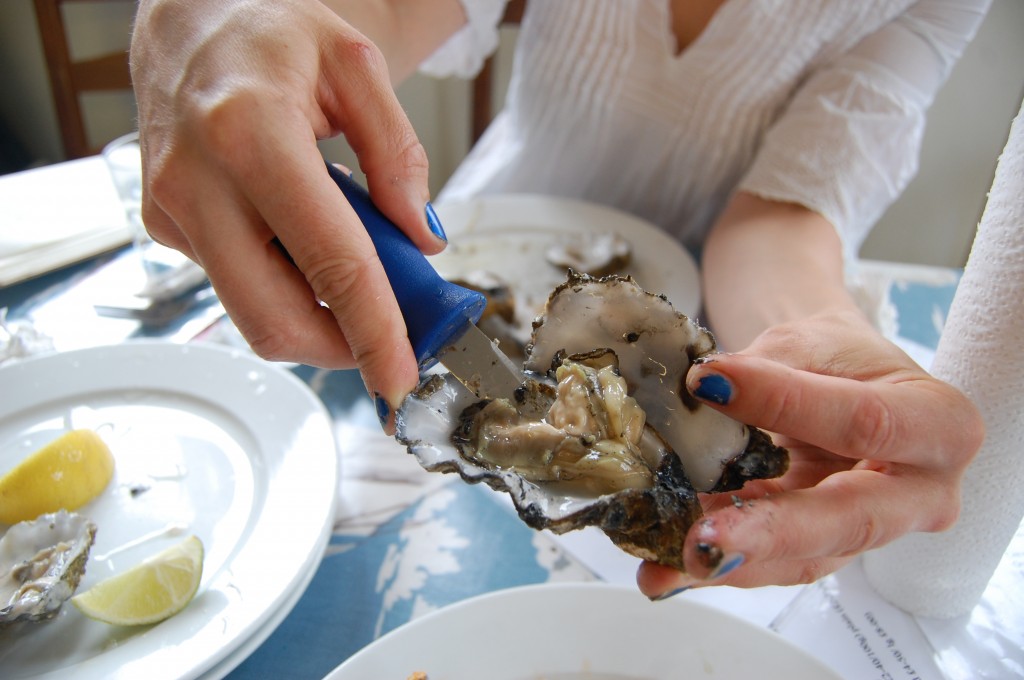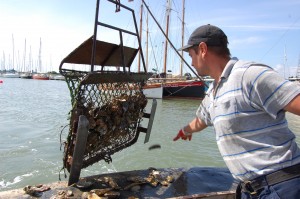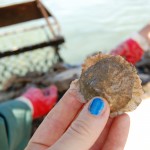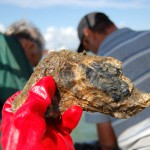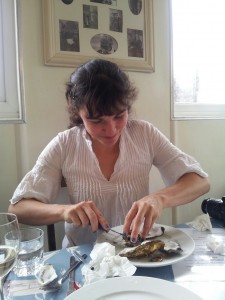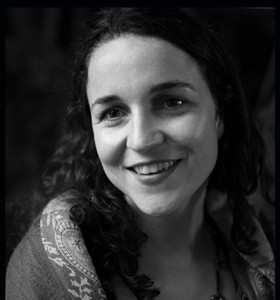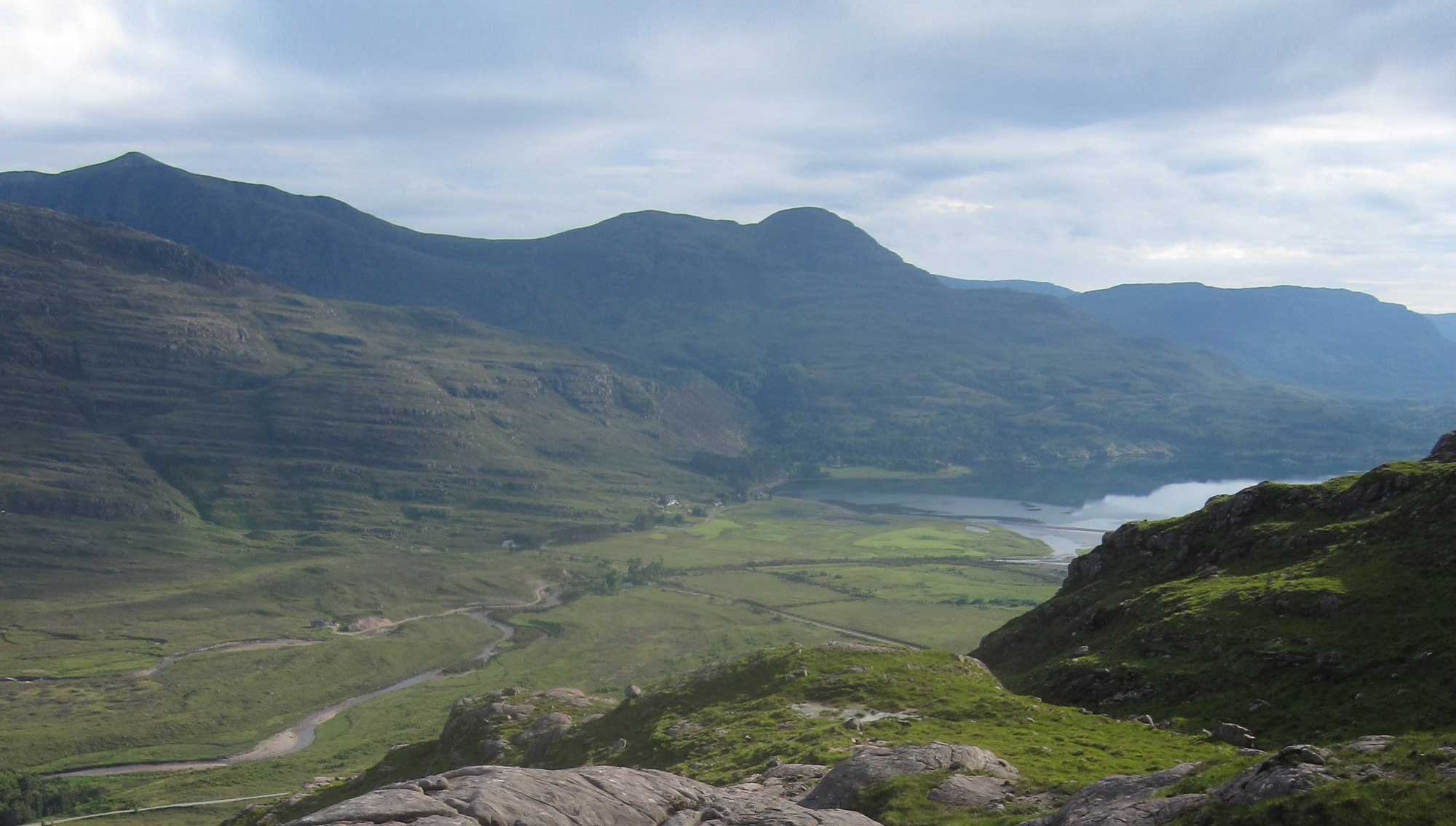Oysters are possibly the most “raw” food experience you can get, in fact they are probably still alive when you eat them…
For a certain kind of foodie this is part of the appeal, for others it is a complete turn-off.
“Oh some people say they can feel them swimming towards their stomachs,” says Richard Haward, a 7th generation oysterman, with obvious glee.
With his white beard and calloused hands he looks like a man o’ the sea, even when sitting in the pink-painted kitchen of his bungalow in West Mersea.
I have come to talk to Richard about the ethics of eating oysters, something I’m not sure anyone has asked him before.
“Is it cruel? Is it cruel?” He laughs. “Well, we’ve had people rescue lobsters and put them back in the sea. But not oysters…” He elongates the word in his old school Essex accent (this is different from TOWIE). “’Course the lobsters always die, they put them back in the wrong place…”
Fishing for oysters
The first step to find out how the oysters feel about the whole experience is to go out and see them caught. I join Bram, Richard’s son, making him an 8th generation oysterman – though his beard is not yet white, on the Jacqueline Anne in Brightlingsea.
I expect to sail out to sea but in the end we just spend the morning chugging about the harbour. There are not many other fishing boats around as the once-thriving industry collapsed in the last four decades with the arrival of ‘factory boats’ and the depletion of fish stocks. Only one boat in the harbour goes out commercially now, while the rest of the boats are yachts except for a converted fishing boat to service the local wind farm and our one oysterman.
In fact so many oysters grow in the mud they are actually a nuisance, explains Bram as he steers.
“We are doing the harbour a service by dredging the bottom,” he says.
The non-native rock oysters were introduced from the Pacific forty years ago to be cultivated for fancy restaurants. No one bothered with biosecurity in the swinging 60s and anyway it was assumed it was impossible for the species to survive our cold winters. Of course they did more than survive, they thrived and now cover the sea bed around the south coast.
Brams calls them “gigas” after their Latin name crassotrea gigas and they are indeed gigantic, reaching the width of a man’s hand in five years and a hand like Richard’s in nine.
It takes only a few seconds to scrape the oysters from the bottom with the trawler, that looks like a flat square net on skis, so that it can slide along the bottom flipping in oysters.
Bram knows where the oysters are, though they are not cultivated here. Every so often we will find one of the rare native oysters. The fan shaped shells with pretty purple and green markings seem delicate in comparison to the gnarly old rock oysters and are much smaller – though they can grow almost as big given enough time and were enjoyed in Roman times. In fact they were enjoyed so much they almost went extinct. Over 700 million oysters were consumed in London alone in 1864 and the species was overfished for centuries. The natives are also dying out as areas of the coast silt up or are taken over by gigas.
Bram and his father are trying to bring the natives back by working with Natural England to restore natural oyster beds, where up to 250 other species also thrive.We throw the native oysters back as they are not allowed to be eaten when they are spawning during the summer – or when there is not an ‘r’ in the month.
For rock oysters it is different, since they are trying to get rid of them anyway.
“You see, you are actually doing the environment a favour by eating these,” says Bram tossing another enormous oyster into the bucket. “Though don’t know how you’ll eat this many…”
The oysters must filter in a tank for two days and then I can go down to the Company Shed, where the family sell their oysters, to enjoy my catch.
Shucking oysters
The restaurant on Mersea island docks sells seafood about as fresh as you can get, with the tanks gurgling away in a garage behind the seating area. I find “my oysters” looking content enough and ask a passing oysterman how I am to kill and eat my catch.
“There you go,” he hands me a vicious looking instrument, that looks like a cross between a knife and a screw driver.
The waitresses in wellies are no less sympathetic when I explain I want to “shuck” my own oysters. They demonstrate how to insert the knife into the “mouth” of the oyster and then wiggle it around until it opens with a satisfying pop. It is then just a case of cutting the “heels” still attached to the shell and dinner is served.
Apparently the best oystermen can shuck 1,000 oysters in a day. I struggle with one. This oyster may not have a brain but he definitely does not want to let go of life.
To my surprise when researching this piece I find that many vegans positively adore eating oysters They argue that oysters cannot feel pain since they do not have a central nervous system. Furthermore oysters are not farmed in an environmentally damaging way like factory farmed pigs or chickens – in fact you could even argue that in cases like the rock oysters it is good for the environment.
Still I can’t help thinking that the quivering mollusc sitting before me looks more sentient than broccoli. I squirt lemon on him and see if he flinches, it’s difficult to tell.
It is also quite difficult to swallow, the huge rock oysters are like knocking back a rock pool and to the uninitiated the mixture of salt and slime can cause an involuntary tightening of the throat. Did I chew? A little and it tastes good; like a mixture of potting soil and sea air, as if you have inhaled some of the day. You can understand why oysters are thought to be an aphrodisiac or at least a health food for the feeling of wellbeing it brings.
With the help of some tabasco I finish three huge oysters and feel uplifted and healthy (though that could also have been the Essex wine). It is no wonder as the bivalves are full of zinc and other minerals we get in no other food. I vow to get better at shucking and eat more in future. In fact I hope to cash in on two I am owed for helping a sustainable seafood shack set up at Westward Ho.
Killing oysters… and other animals
My purpose for taking the death of my dinner a little more seriously than usual is because this is the first meat I have eaten in a while as I have pledged to only eat animals I have killed myself for at least a year.
As Chris Martin, the singer from Coldplay, tells a national radio show a few days before I begin my ‘kill-to-eat diet’: “You should only eat something you would be able to kill yourself.”
The idea has been bubbling away for a while as I want to use it to explore how we eat meat. It seems to me we have lost connection with the food on our plates. Despite most of my friends claiming they only eat “ethical” meat, I am not sure any of us know how the animal actually died. The idea is to learn to kill game and fish, in order to explore the ethics and indeed emotions behind eating meat. I will also visit slaughterhouses to meet the people who do it on our behalf. As a vegan friend says “you might not carry the gun, but you hired the hitman”.
Where possible, I am going to write about the experience on this blog – though frankly it is such a huge issue it will not be possible to explore every angle. I realise some people will find it repugnant and they are entitled to their view but I would argue that I am eating a lot less meat this way and perhaps even encouraging others to cut down.
The only other person I can track down who has done it before is Mark Zuckerberg, the founder of Facebook, but like Martin he is too famous to take seriously – and anyway, he didn’t write about it except for the occasional status update: “I just killed a pig and a goat”.
Oh, and Alan Clark, the diarist and late Tory MP, who was vegetarian except for animals killed in the wild. Apparently he ate treacle tart for every course instead, which is an idea I intend to embrace.
Obviously oysters might seem like an easy place to start. (I have actually killed one other animal already, but might have to save that story for a possible book.) But I am quickly learning one important thing: it certainly makes you think a lot more deeply about the food you eat and, if it doesn’t seem too sentimental a thing to say, it makes you think about life.
But perhaps I am sounding a little like the Walrus just before tucking into his oysters in Lewis Carrol’s poem the Walrus and the Carpenter:
“I weep for you,” the Walrus said:
“I deeply sympathize.”
With sobs and tears he sorted out
Those of the largest size
Holding his pocket-handkerchief
Before his streaming eyes…
I would love people to share their thoughts on the idea of only eating meat you kill yourself so please do post in the comment boxes below.

